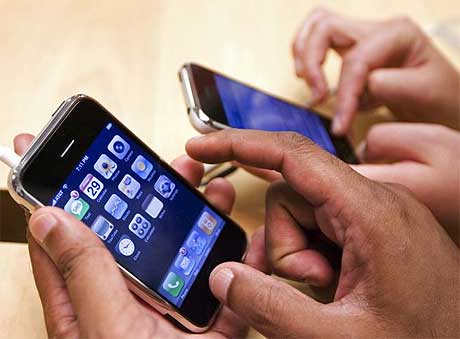The arrival of the iPhone has introduced the world to multitouch technology, and meant that it is now no more than a finger's reach from we mere mortals. What is this amazing innovation?
Multitouch technology differs from touchscreens that have come before by allowing two-handed operation, and allows more than one person to use the same interface.
Jeff Han, consulting research scientist for New York University's Department of Computer Science, has been a pioneering force in the development of this new technology.
By using a sheet of acrylic which has been lit along the side, the team was able to register the dissipation of light when the surface of the acrylic was touched. In layman's terms, before being touched there was total internal reflection of the light - and none of it escaped.
However, touching the surface bounced the light out and this was then registered along sensors beneath the acrylic. These points became the points of contact and then it was a matter of developing the software that made sense of these points and put them all together.

Image courtesy of the guardian
There are now a number of companies using multitouch technology. Alongside Apple's new phone, Microsoft has entered the market with its Surface - a tabletop that responds to a variety of users.
This tool is also capable of wirelessly transmitting from cellphones and cameras, so that camera information and pictures appear on the surface as if by magic. Users can edit information by dragging their fingers between points.
Microsoft employee Andrew D Wilson developed TouchLight technology - a simultaneous projection and capturing device that allows two people to interact on the same display form on opposite sides of the world.
The grandest of Multitouch devices, though, is the HP Obscura - a giant wall which can be used to build projects, allowing a number of people to interact with the information they all need in a three-dimensional interactive environment, with a flick of the wrist.
As Multitouch technology gains momentum, the future looks set to offer a whole new world of interactivity. -
cbass.cpt@gmail.com




